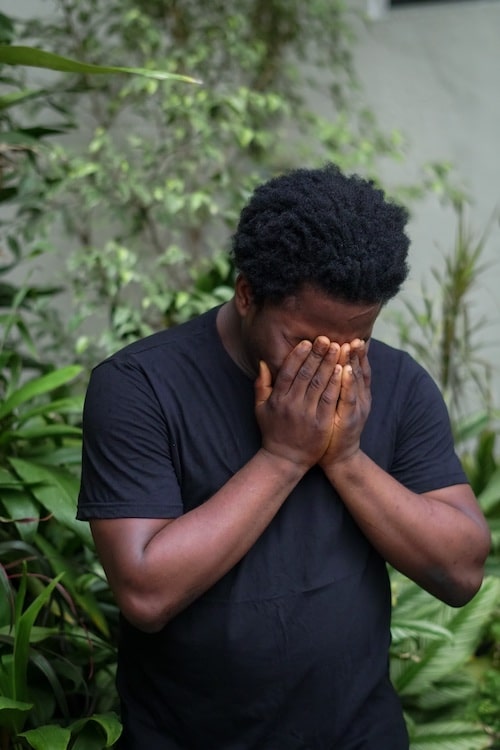We enjoyed an interesting and thought provoking in-person seminar with our host, Briony Martin. The…

Therapeutic Errors and Psychotherapeutic Presence with Dr Ruth Birkebaek (February 2022)
Bramham Therapy invited the wonderful integrative psychotherapist, Dr Ruth Birkbaek, back to speak to us about Therapeutic Errors and Psychotherapeutic Presence at a hybrid online/in-person event.
The ‘errors’ she was referring to are not ethical issues, but rather the subtle, small mistakes that we all make with clients sometimes, when we are mis-attuned to them. She invited us to really think about what happens for our clients when they feel missed by us, so that we are able to repair the damage done.
‘The essential premise to Integrative Psychotherapy is that “healing occurs in the relationship”’ Richard Erskine.
This quote represents the essence of what Dr Ruth was talking about – that while it is in relationship that the rupture may occur, it is also in the relationship that it can be repaired. As she explained, the moment we stop and acknowledge a mistake, it opens a space for the client. She told us about the time she had forgotten a session with a client and how, in firstly apologizing and then really attending to her client’s response and gently returning to her initial avoidance of it’s impact, her client was able to talk about being forgotten as a child, something which had not previously been revealed in therapy. She used this example to highlight the significance of exploring the impact of mistakes, making the link with developmental deficits for our clients who may not have had a parent who was able to say ‘I am so sorry’ for the inevitable mistakes of parenting and how for those clients lacking that secure relationship as a child, to experience it in the therapeutic relationship can be transformative.
Dr Ruth shared her thoughts about psychological contact with us, including internal, external and inter-personal contact. Internal contact refers to body sensations, thoughts, feelings, memories and dreams; External contact to what we see, hear, feel and smell and Interpersonal refers to the relationship between therapist and client and stressed how important it is for us, as therapists, to be in full contact with ourselves in order to be present for our clients.
She suggested that when there is a rupture in relationship, the client stops their internal contact, in order to avoid feelings, to protect themselves. This in turn results in disconnection from relationship and the implementation of defensive mechanisms to protect themselves.
In considering transference in the context of mis-attunement, Ruth suggested looking at it as not just a repetition of the past but also the client’s reaction to current relationship with the therapist, i.e., the ‘here and now’ transference. She gave the example of the therapist looking at the clock in a session, which, depending on the client’s script belief can be really impactful. She suggested that we need to be aware of the impact of our tone of voice, the way we dress or how we look, all of which will be impacting our clients.
She asked us to consider how we might notice if there has been a therapeutic error, suggesting that the client may go silent or persist in talking about superficial events. Or, it may be that they start to come to sessions late or miss sessions. It may be that this is part of protecting their sense of self and as such, something to pay attention to.
Dr Ruth was keen to remind us not to confront or offer explanations or interpretations at these moments, which may activate feelings of shame in the client, that they can never get anything right. Rather, to engage in what has happened with open and non-defensive enquiry into what the client may be feeling when the mis-attunement happened, thus validating rather than shaming the client.
She also talked about the Juxtaposition Reaction, explaining this as a reaction the client may have to the contrast between the richness of the therapeutic relationship and the frustration and pain of previous relationships and noting the importance of noticing if the therapy is going too fast, or is too intense for the client and adjusting to their rhythm so that they can tolerate the work.
Dr Ruth went on to consider Psychotherapeutic Presence and what this means, explaining that she understands it not only as being attentive to what the client is saying, but also to their non-verbal expression. It includes the therapist being willing to be impacted by the client’s emotions and be moved by them. This is what she means by attunement; it is beyond empathy as the therapist is willing to communicate to the client her own understanding by providing a reciprocal affective response. In this way, ‘presence’ communicates the therapist’s sense of responsibility, dependability and reliability within the relationship as an expression of the therapist’s full internal and external contact with her client.
In summary, Dr Ruth gave us Richard Erskine’s 4 stage model of rupture resolution:
- The Therapist recognizes the rupture and draws the client’s attention to it.
- The experience of the rupture is explored collaboratively
- If the client withdraws from this exploration, his/her avoidance becomes the focus of the exploration
- The Therapist and client work on clarifying the client’s fears or wishes underlying the rupture.
As always, Ruth delivered her talk with great warmth and generosity, sharing her experience of therapeutic errors and inviting delegates to share theirs. She was particularly sensitive to the needs of those attending online, ensuring that they felt included and heard. She gave us a really informative, connected enjoyable seminar.




This Post Has 0 Comments